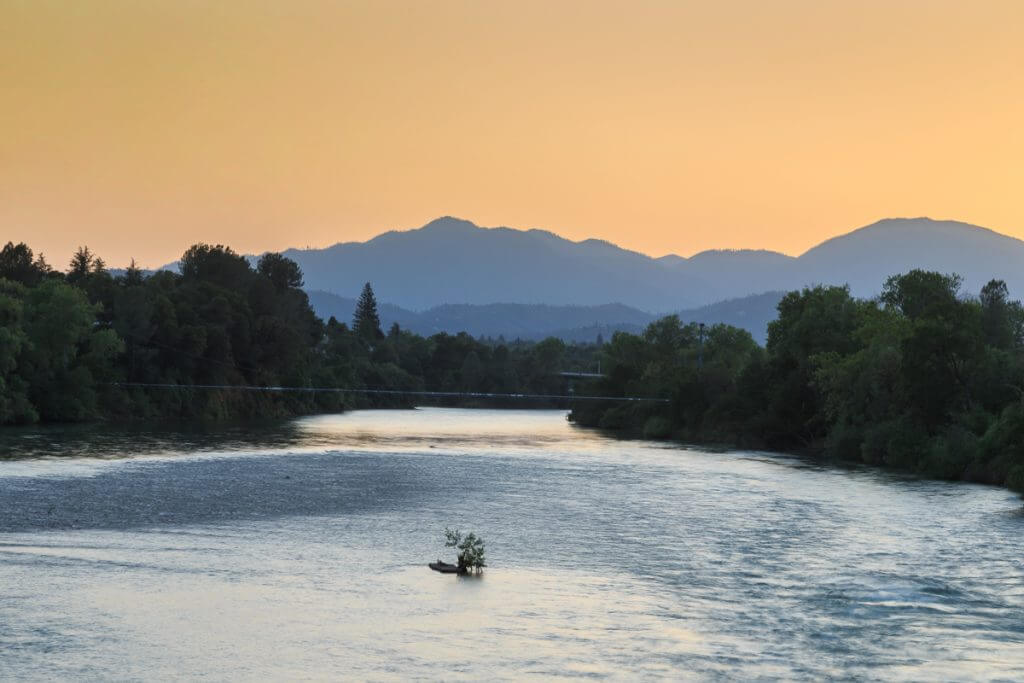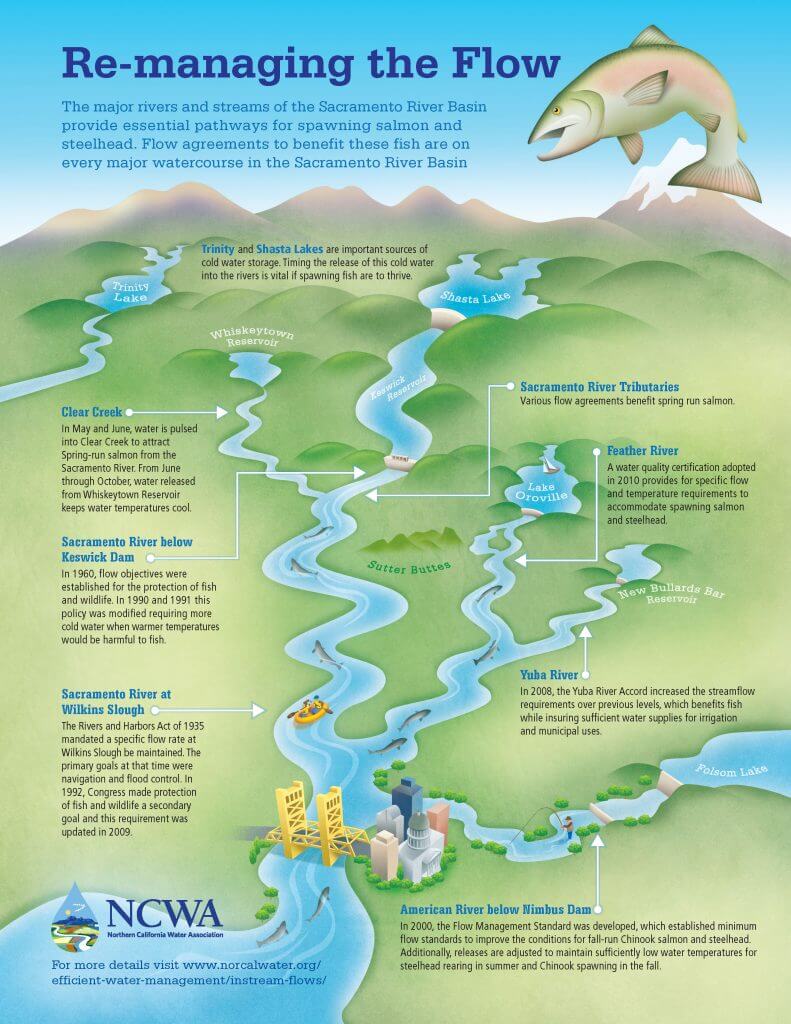By Todd Manley

Water has been re-managed in the Sacramento River Basin over the past several decades in creative ways to provide essential pathways for spawning salmon and steelhead. Every major watercourse in the Sacramento River Basin has flow agreements that are designed to benefit salmon and steelhead, while balancing other uses of water for various beneficial purposes. Many of these agreements took decades of hard work by local and state leaders to develop and then implement.
These arrangements are captured in the recently-updated compilation of detailed descriptions of each flow agreement that has re-managed flows to benefit fish in the region. These re-managed flows provide the framework for managing water resources in the Sacramento River Basin and are all adaptively managed in different years. They also are part of the more comprehensive Freshwater Ecosystem Budgets in the Sacramento River Basin, a modern water management tool that specifies a volume of water to be made available to support a range of ecosystem functions to which native species are adapted.
Efficient water management coupled with an ever evolving scientific understanding of the water and habitat needs of Chinook salmon and other fish species during specific freshwater life-cycle stages will inform water resources managers as they further refine management actions to benefit fish.
A good example of how science is evolving is provided by Dr. Sarah Yarnell and Dr. Robert Lusardi in an article published earlier this year in California Trout’s online magazine The Current on their work to describe the importance of functional flows to the environment and the development of the California Environmental Flows Framework (CEFF).
This evolution in thinking about flows gets away from the “more is always better” philosophy that has driven many flow decisions in the past, and looks to key linkages between streamflow and biological response to develop a flow regime to support native species. In the article, Yarnell and Lusardi further refine this description by stating “we now know that habitat, from a fish’s perspective, goes far beyond just depth and velocity preferences and that streamflow and the full life history of salmonids are inextricably linked. So, instead, CEFF uses a functional flows approach to better understand how much water fish need and, importantly, when they need it.”
This targeting of flows to provide specific benefits when and where fish need them uses scientific modeling and monitoring to manage the resources in a more efficient manner. Historic flow criteria that requires a percentage of the total water supply or a gross quantity of water over the course of a calendar year, does not recognize the value that timing and location of flows have on their ability to benefit fish and other species. Yarnell and Lusardi describe the importance of this relationship as “the functional flows approach provides a basis for estimating how much water is needed for the environment, where key components of the natural flow regime are targeted rather than the entire natural flow regime. Desirable functional flow components have a disproportionally important role in supporting the physical and ecological processes that create and maintain habitat and trigger native species seasonal movements.”
Additional information on the California Environmental Flows Framework is available here.
Please click on the document below to see more detail.





Everything’s in the name of the salmon. Diversion dam was for the salmon. The cold water from the bottom of lake shasta. On and on. We have almost managed them to extinction. The sac is a third of the water in cali and that’s actually what their after water.They could not care less if the salmon survive or not it’s about money. Now their going to open up the water entryway to sand slough to get a little flow and its costing multi millions for the salmon. It’s all a crock a shit. Their gonna suck that river dry with their new big pumps and we are going to have a little trickle on the side for fish. Lies deceit they should be ashamed
I just moved to Redding June of 2020. I was wondering when the flow of the Sacramento River will increase.?